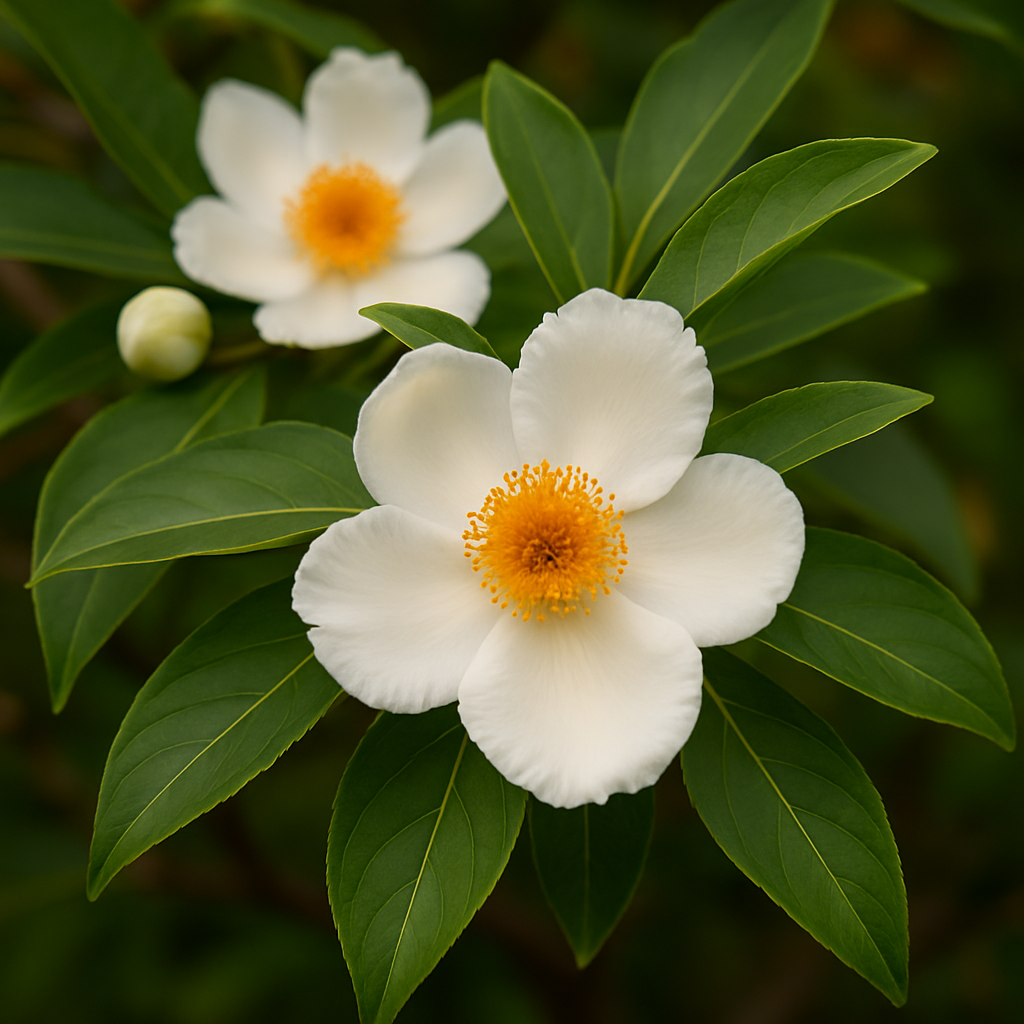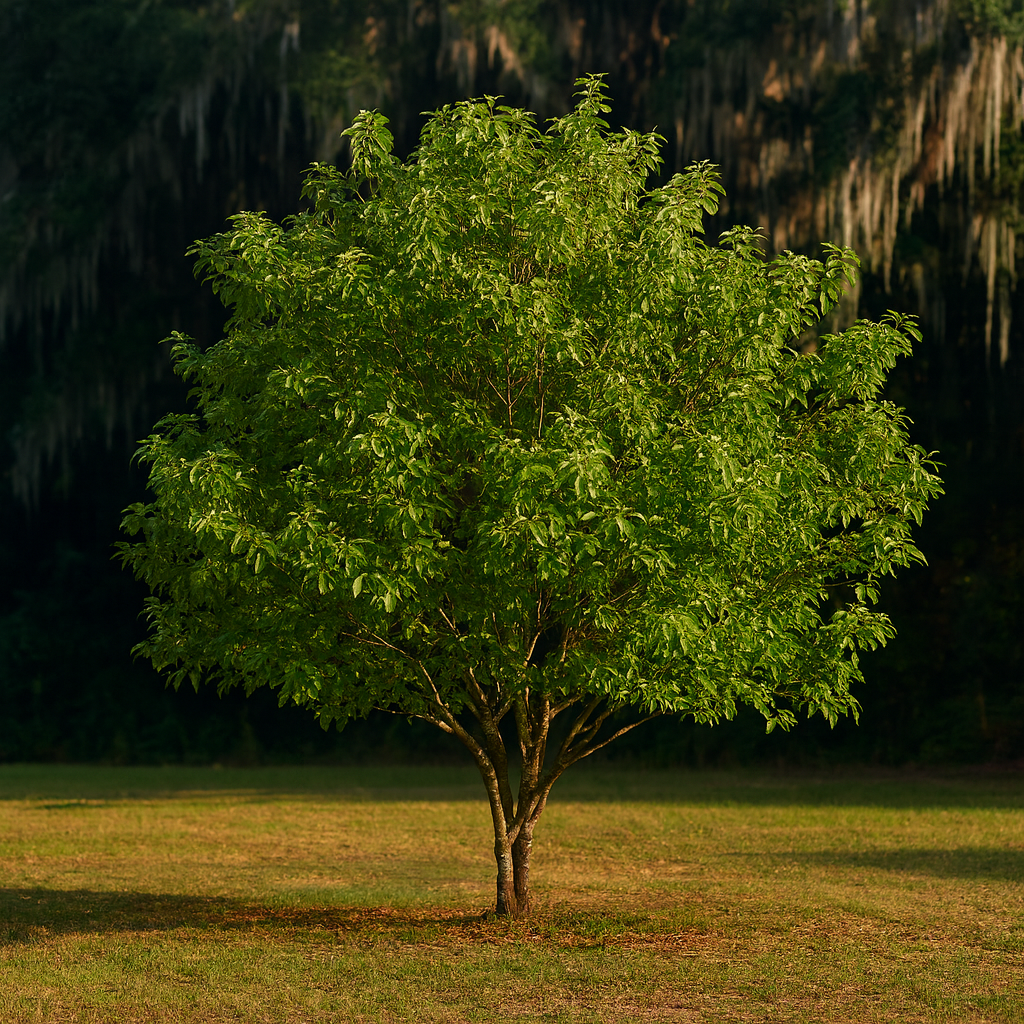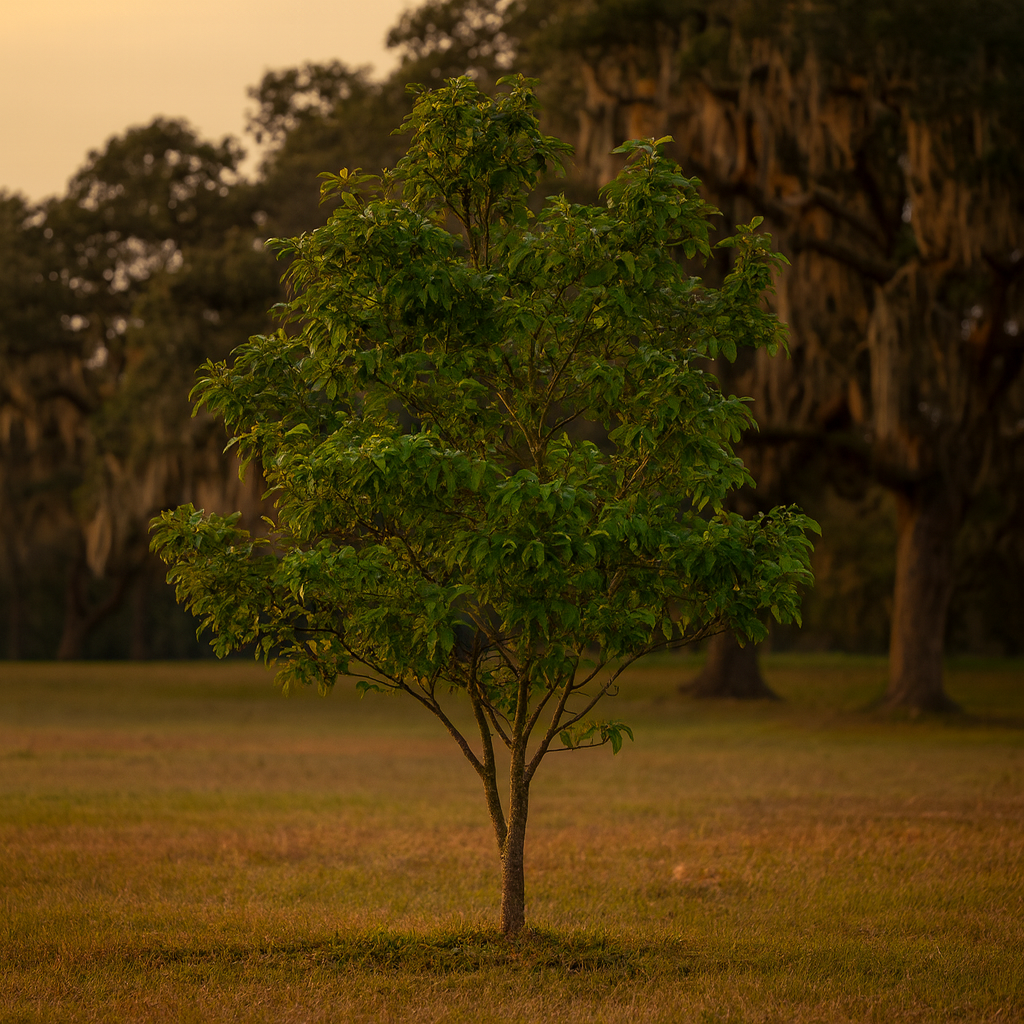Limited Quantities - Reserve Now For Fall
Ben Franklin Tree
Ben Franklin Tree
Couldn't load pickup availability
Franklinia alatamaha
Ben Franklin Tree
The Ben Franklin Tree is one of the rarest and most storied ornamental trees in North America. Once found growing wild along Georgia's Altamaha River and now extinct in the wild, this small flowering tree is prized for its fragrant, camellia-like white blooms, deep green leaves, and fiery fall color.
Highly collectible and steeped in botanical history, the Ben Franklin Tree adds elegance, intrigue, and seasonal brilliance to any well-tended landscape.
Ben Franklin Tree Overview
|
Attribute |
Details |
|
🌿 Botanical Name |
Franklinia alatamaha |
|
🏷️ Common Names |
Ben Franklin Tree, Franklin Tree |
|
🌳 Mature Height |
10–20 feet |
|
🌐 Mature Width |
6–15 feet |
|
📈 Growth Rate |
Slow to moderate |
|
⏳ Lifespan |
50+ years with care |
|
🧊 USDA Zones |
5–8 |
|
❄️ Chill Hours |
500–800 hours |
|
☀️ Sun Preference |
Full sun to light shade |
|
🧱 Soil Type |
Moist, well-drained, acidic soils |
|
⚖️ Soil pH |
Acidic (5.0–6.5) |
|
💧 Water Needs |
Moderate; dislikes drought and overly wet soil |
|
🌸 Flower Color |
Large white camellia-like blooms with golden centers |
|
🍒 Fruit Type |
Small woody capsule (not edible) |
|
🐝 Pollinators |
Attracts bees, butterflies, and beneficial insects |
|
🌿 Growth Habit |
Upright, open-branching, multi-stemmed or single-trunked |
|
↔️ Spacing |
8–12 ft apart or as a specimen |
|
🏡 Landscape Uses |
Ornamental specimen, historical gardens, pollinator beds |
|
🧹 Maintenance Level |
Moderate |
Environmental Benefits
🌸 Provides late-season nectar when few other trees are blooming
🌿 Supports pollinators including native bees and butterflies
🧬 Preserves botanical heritage and genetic diversity
🌧️ Excellent for curated gardens that mimic native woodland edges
Pros & Cons
|
✅ Pros |
⚠️ Cons |
|
🌸 Striking white flowers bloom late summer into fall |
💧 Sensitive to poor drainage or dry soil |
|
🍁 Brilliant red-orange fall foliage |
🌱 Can be difficult to establish in challenging climates |
|
🧬 Rare, historically significant native species |
🐛 Susceptible to root rot in compacted or wet soils |
|
🐝 Attracts pollinators when little else is blooming |
📉 Limited availability due to propagation difficulty |
|
🏡 Elegant focal tree with multi-season beauty |
📈 Slow-growing and needs attentive site selection |
Planting & Care Guide
🛁 Water well before and after planting to minimize shock
🕳️ Dig a hole 2–3 times wider than the root ball; keep crown at soil level
🌾 Mulch with pine bark or shredded leaves to conserve moisture and acidity
💦 Water weekly for the first year, especially during dry spells
✂️ Minimal pruning needed; shape lightly after flowering if necessary
🧪 Apply acid-loving plant fertilizer in spring; avoid overfeeding
The Ben Franklin Tree is a horticultural treasure—rare, refined, and radiantly beautiful. Ideal for gardeners who appreciate botanical history and are willing to provide the right conditions, this tree rewards patience with breathtaking blooms and vibrant autumn displays. A true conversation piece in any garden.
Share






